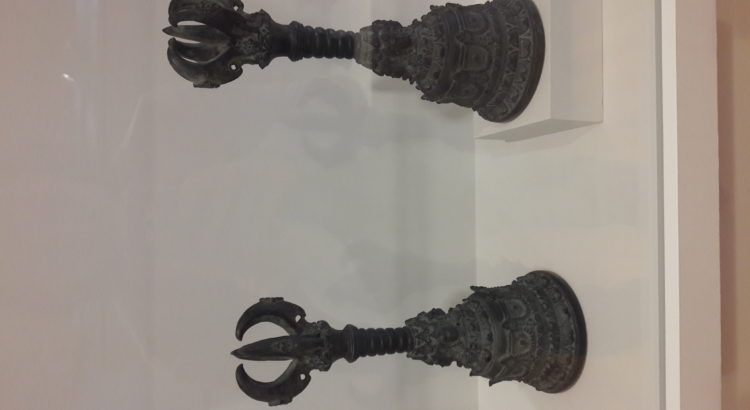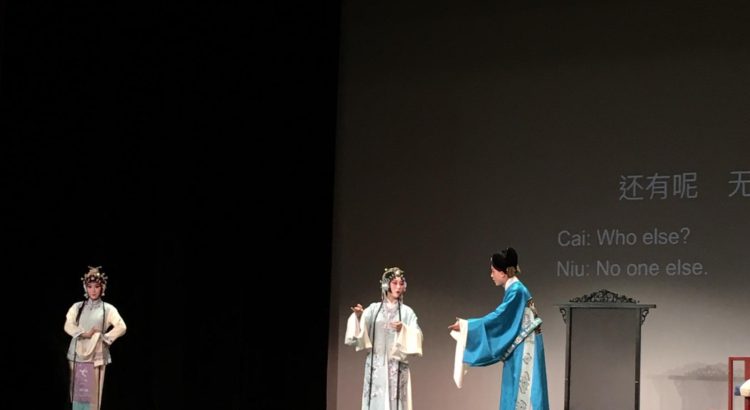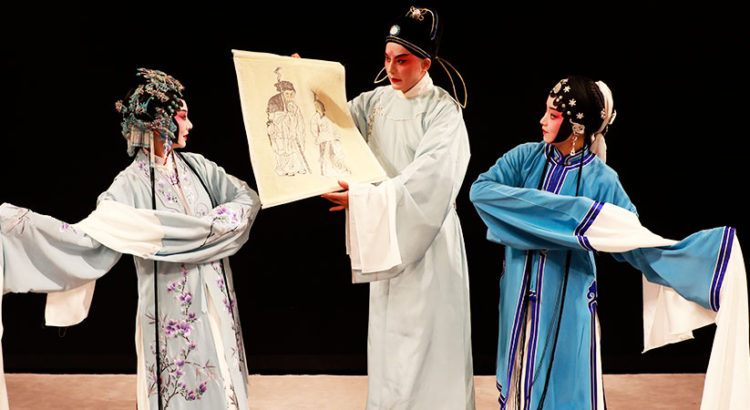Like all special exhibits in UMMA, this exhibit is a very small exhibit, only taking up part of a hallway and consisting of a few art pieces. It is an interesting exhibit because it is about how Buddhist art and objects invoke our senses; smell, sight, feel (there are lots of things to touch in this exhibit), and most importantly mind (thought), our sixth sense. In fact, I have always thought of Meditation as a release from all six of our senses, we close our eyes, sit still, ideally only smelling one fragrant of incense, hearing only silence, and letting our mind relax, detached from any thought.
The main piece of this exhibit is a painting of a Buddha heaven. This painting is from Pure Land Buddhists, one of the biggest sects of Buddhism in China, and is of someone, probably a monk, being welcomed into heaven. I like that the heaven is on the clouds, it makes me think that heaven is always watching over us. In this painting figures with halos represent Bodhisattvas. Tea is an integral part of Buddhism, and so there were two tea bowls, one from China and one from Japan. The Chinese bowl is a lot older, but it looks more modern because it is symmetrical and completely smooth. The Japanese bowl, on the other hand, seems much more hand crafted,maybe even by an amateur, because it is rugged and asymmetrical. However, in Japanese art this is intentional because Japanese ceramic art considers asymmetry more beautiful and more impressionable.
The featured photo is of Bells and Vajra. This bell is very ornate, and was probably used to call monks to the meditation hall. You can touch a 3D printing of the bells at the exhibit. There are beautiful incense holders. Next to them are cards you can take that smell like clove incense. Incense is often used to keep track of time while meditating. When the incense burns out, you are done. No sporadically looking at a clock is necessary. The last piece in this exhibit is a Rakusu, which is the garment monks wear outside their robes. This Rakusu was pretty ornate and had designs, so it was probably of a monk that had a higher status. Monks like to make their own clothes, because it is a tradition from monks who were too poor to afford clothes and would patch together old rags.
The exhibit is small, but there is actually a lot of Buddhist artwork in the Asian Art gallery. If you can’t get enough from the exhibit you can see more paintings, actual scrolls, and shrines that were in temples in the gallery.





















